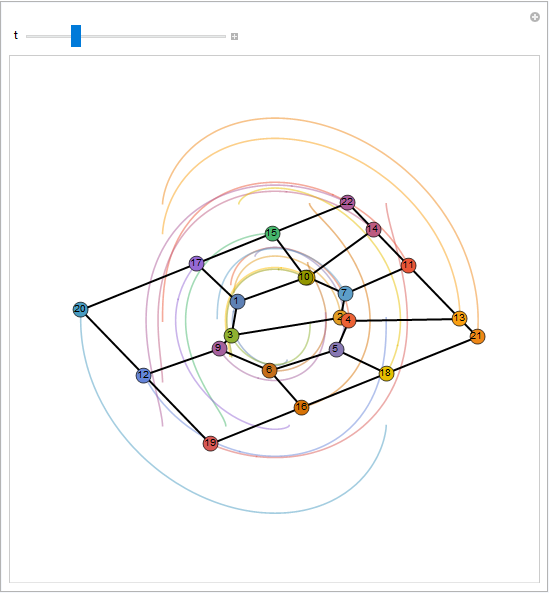Consider the following graph, which is obtained from a VoronoiMesh
pts = RandomReal[{-1, 1}, {10, 2}];
mesh = VoronoiMesh[pts];
gr = Graph[mesh["Edges"], VertexCoordinates -> mesh["Coordinates"]]
Assume such graph has $M$ vertices. Imagine that, for each vertex position $r_i$ ($1\leq i\leq M$), I want to solve $$ \frac{dr_i}{dt}=F_i(t) $$ for some "force" function $F_i$. This is often known in epithelial biology as the vertex model.
My question is: given gr as the initial condition (or, better said, its vertices positions), is it possible to solve the ODE for each vertex and keep the corresponding edges fixed? That is, between any two connected vertices, the edge connecting them is automatically updated and kept linking the corresponding vertices when they move according to the equation.




grwithgr = SetProperty[gr, VertexCoordinates -> newcoords]. So do not feedNDSolvewithgr; just feed it withPropertyValue[gr, VertexCoordinates]. $\endgroup$